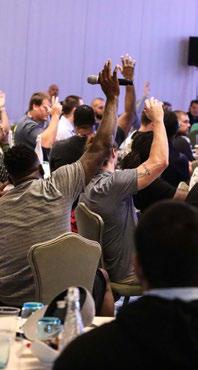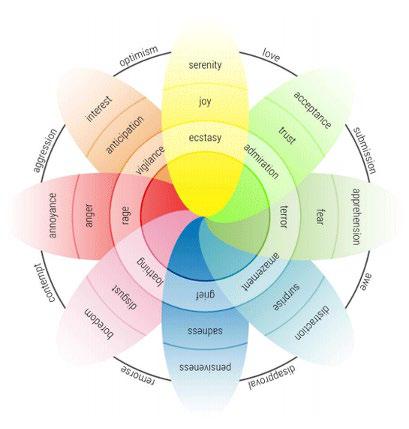WORKBOOK





T he Wellness team a t t he N FLPA is here t o ensure t ha t y ou ha v e t he resources to maximiz e
primar y goal is t o pro v ide y ou with the tools t o keep y ou healthy w e’ v e also got you co v ere d w hen y ou ’ re injured .
T he reason y ou’re recei v ing t his ou t reach is because o f your s t atus o n IR We hope t his w orkbook can help make the bes t of your t ime awa y
as an aid f or establishing y our “men t al weigh t room” learning abou t t he impac t that y our t ime on IR can ha v e on y ou emo t ionally an d sociall y. T his can change how y ou t hink , f eel , and act . While this i s comple t el y normal it is impor t an t to make sure you are managing i t produc t i v ely . Focus your energ y only on what s in y our control, an d make y our sel f -care and recover y y our t op priorit y .
We w ish y ou a smoo t h and speed y reco v er y

DIRECTIONS


Each t opic has a mental warm-up, workou t and cooldown
WARM UP CHECK IN WITH FEELINGS AND THOUGHTS
Gratitude is something we tend to forget in our busy lives. Practicing gratitude allows your brain to feel more positive emotions, it reduces aggression, improves mental strength, and improves physical health. Challenge yourself to incorporate gratitude into your reflection process and notice what happens.
UP WORK OUT
C H ECK IN WIT H F EELINGS AND THOUGH T S
Imagery & Visualization can help you accomplish your goals whether you are working back from an injury or trying to improve performance on the field. It’s important because we can use these skills to improve on tasks we may feel anxious about, and raise our confidence.

WARM UP CHECK IN WITH FEELINGS AND THOUGHTS
WORK OUT W A YS TO M A NA G E S T R E S S
t ime you spend doing your exercises or working through this w orkbook .
Diaphragmatic breathing: deep breathing from your diaphragm is a relaxation technique that provides both immedia e and long-term relief rom stress and anxiety It can help alleviate muscle tension and t can focus your mind on the right things so you can perform your best
To practice you want to make sure you are inhaling deeply and exhaling deeply from your diaphragm. To make sure you are breathing from your diaphragm, place one hand on your ches and the other on your stomach. Take a moment to notice your breath The hand on your stomach should be moving outward as you inhale
BODY SCAN:
A body scan is intentional focus on each par of your body. This technique is used to manage stress, anxiety and in some cases, chronic pain. It allows for acceptance of what is experienced in your body. A body scan can be done anytime anywhere. Daily practice can lead to improved well being and reduced pain related distress COOL DOWN

WARM UP C H ECK IN WIT H F EELINGS AND THOUGH T S
S ome t imes w hen w e ge t injured w e may feel a sense of loss because the routine is gone and in som e cases, one migh t be removed f rom daily contact wi t h t heir teammates, coaches , s t af f because of rehabbing .
li f e t o N FL . Honor and recogni z e t hose feelings. It ma y feel like disappointmen t , frustration, sadness, etc .
Remembering who you are outside of being an athlete is important. Of your entire being, athlete is one part; a major part, but only one part.



